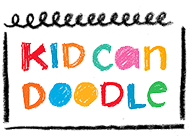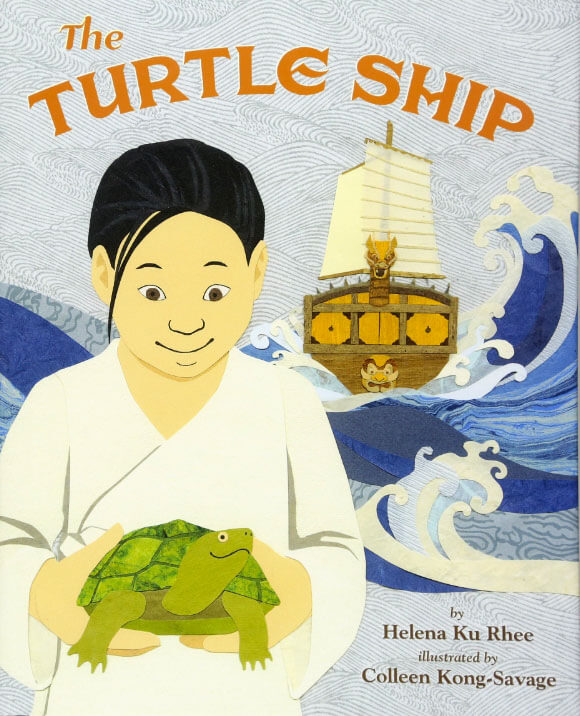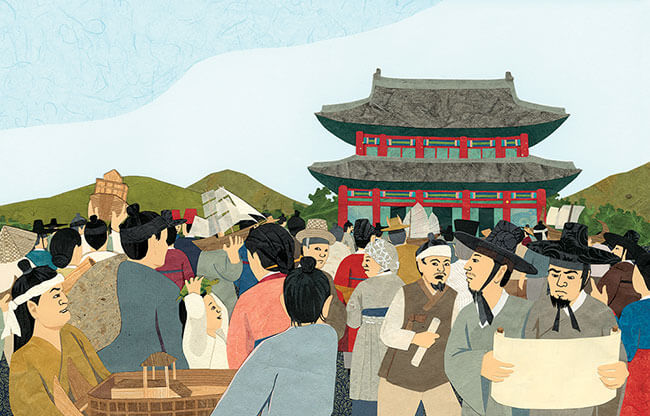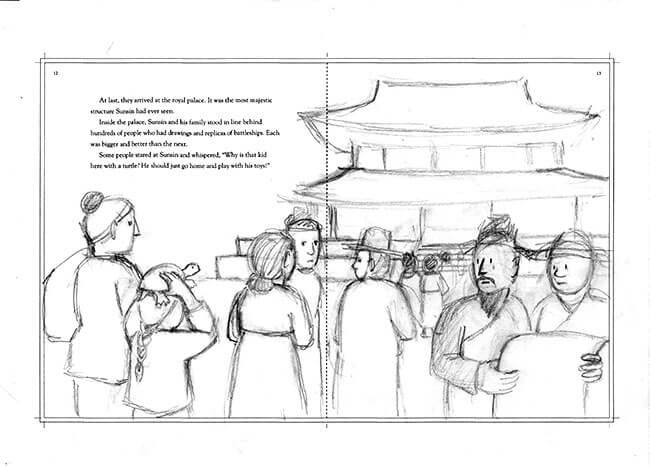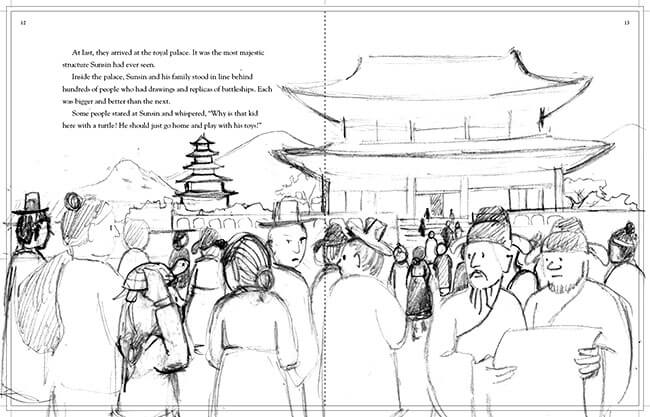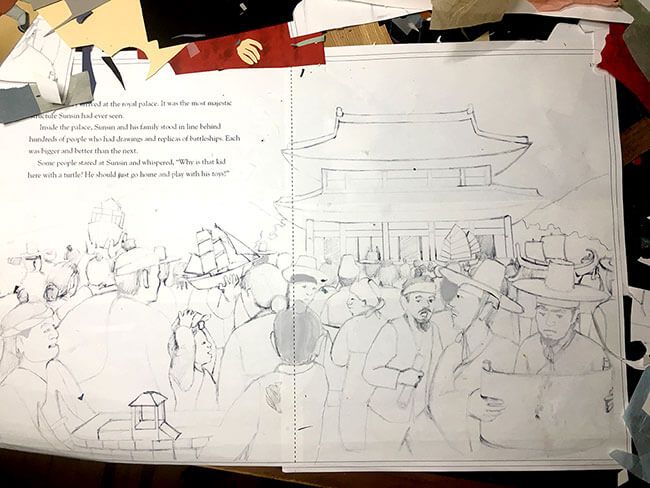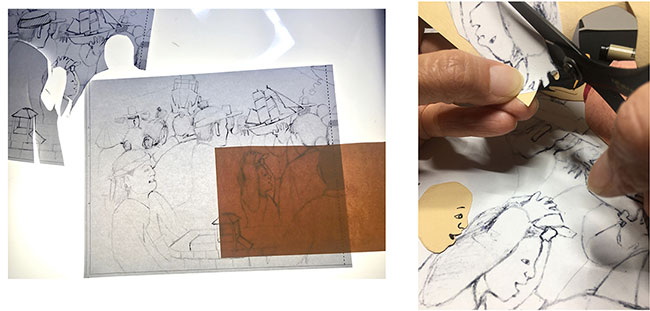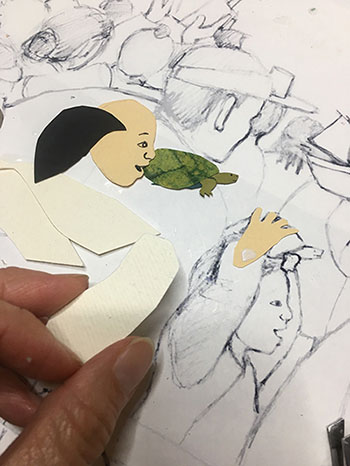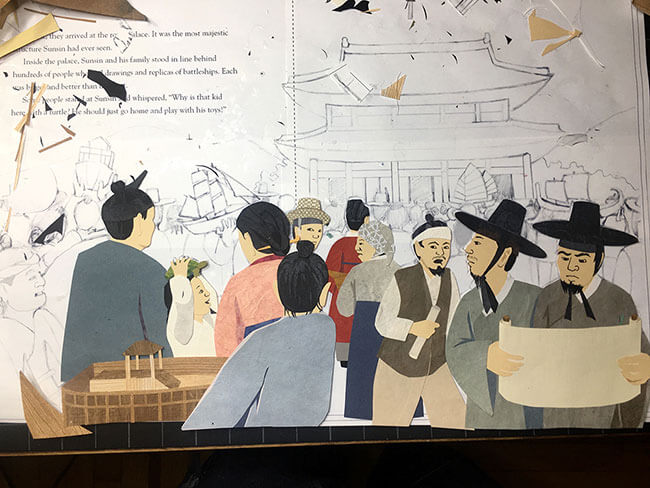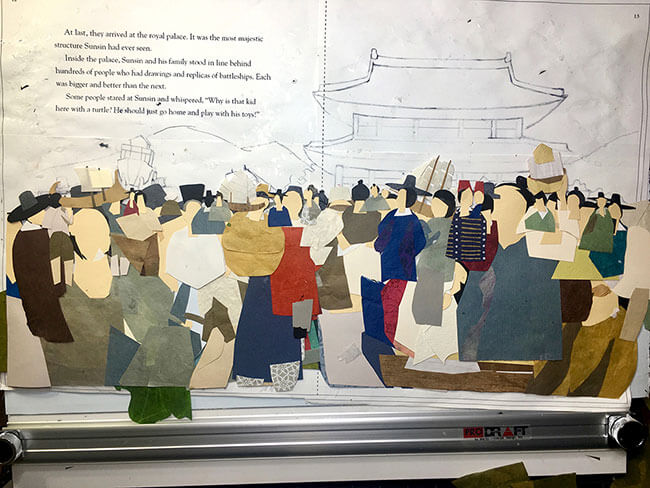
In this series, Awesome Artists, we talk to our favorite artists to find out their techniques, learn how they draw, and get their tips for creating. Last time, we spoke to two artists who gave us a peek at their recent book projects: Richard Jones, illustrator of The Snow Lion, and Colleen Kong, illustrator of The Turtle Ship. Today, we’d like to introduce you to author AND Awesome Artist Fred Blunt.
Meet Awesome Artist Fred Blunt
Fred Blunt is an award-winning illustrator of a bunch of picture books — they all have his signature scribbley style, as you shall soon see (SORRY, I’m a fan of alliteration). Fred is kind enough to share some behind-the-scenes sketches from his latest book, Lionel the Lonely Monster.
Kidcandoodle: Hi Fred! Can you please tell us about your new book, Lionel the Lonely Monster?
Fred Blunt: Lionel the Lonely Lion is a light-hearted story of friendship, kindness and the power of a hug.
KCD: What inspired the character?
FB: I’ve always loved monsters… right back to watching the muppets when I was little. I always loved the big scary-looking one “Sweetums” (from the Muppets, shown below), and I can still remember my mum reading me Where The Wild Things Are by Maurice Sendak when I was very small.
And Not Now, Bernard by David McKee is perhaps my favorite picture books of all time. So perhaps monsters have always been lurking, waiting to get out into a book for me?
The story was actually inspired by a comic I wrote around 2012, called Rupert The Frog: A heart-warming tale of a frog who hates his un-froggy name, comforted by a bug cuddly bear who turns out to be called Kermit. I couldn’t work out how to make that into a picture book text, with the pop culture references, so I decided to write a story that had a similar heart, but more accessible.
KCD: Can you show us more sketches from the story? We sometimes like to see what ideas don’t work, as well as ones that make it into the book.
FB: I think perhaps this is the very first drawing of Lionel in my sketchbook. The monster is sitting, looking sad, with a concerned little dog looking on.
These are my first scene drawings in my sketchbook… I tend to come up with little scenes, sketched very quickly – just trying to get something onto the page, to see if anything is working or worth exploring.
Many of these little scenes made it into the book, although the rowing boat didn’t.
Here’s a scene that was in my first draft manuscript, but sadly didn’t make it into the book.
It’s always painful to lose a nice visual gag or a nice line, but with only 32 pages, some good things have to go!
KCD: How did you choose the colors for the book? (I don’t think I’ve ever seen a PINK monster before – does that mean he’s girly?)
FB: The color palette came directly from my first color drawing of the cast of characters: Lionel with Lucy on his shoulders, walking Milo.
I liked the combination of colors and relished the chance to create a world in this limited palette. I tried a few sample illustrations and (the publisher) Oxford University Press was brave enough to let me tackle the whole book like it.
Lionel doesn’t mind if you consider him girly for being pink… he’s very at ease with his monsterhood! To be honest, I’ve never seen colors as either being for girls or boys… perhaps that’s because I grew up in the ’80s and it was the law for boys to wear pink Lacoste polo shirts, coupled with lemon yellow cardigans!
KCD: I love that your first sketch ended up being very close to the final cover art. It shows that sometimes…
“In drawing, nothing is better than the first attempt” – Pablo Picasso
FB: Picasso is my absolute art hero… the confidence of his work is what makes him so mind-blowing for me! It’s lovely when a cover comes so easily from your first thumbnail… it’s happened twice to me now – this and my book Gnome. I think when it comes to covers for picture books, the simpler and bolder the better; I find that my best work is the work that flows easily and naturally. The challenge is retaining the energy of a thumbnail into the final art.
***
Thanks for sharing your process with us, Fred. Please check out Lionel, the Lonely Monster by Fred Blunt, available here.
***
 Every professional illustrator sketches ideas before doing a final piece of art. The first sketches are very loose. Fred says, “I never worry about good drawings at this stage, I just want to get ideas onto the page.”
Every professional illustrator sketches ideas before doing a final piece of art. The first sketches are very loose. Fred says, “I never worry about good drawings at this stage, I just want to get ideas onto the page.”
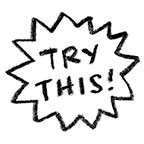
Next time when you want to create something, try sketching out a few ideas first. See how many ways you can approach the drawing, trying it in different way each time. Good luck!
***
All images copyright© Fred Blunt and used with permission.
